#Non Woven Fabrics In India
Explore tagged Tumblr posts
Text
https://thefabrima.com/categories
🧵 Fabrima – Your One-Stop Destination for Premium Fabrics! 🚚
Looking for high-quality fabrics & accessories at unbeatable prices? Fabrima offers a wide range of fabrics with PAN India service and FREE doorstep delivery across Delhi NCR!
✨ Why Choose Fabrima?
✅ Diverse Fabric Categories – Satin, Printed, Non-Woven, Synthetic Leather & More! ✅ PAN India Delivery – We ship across the country! 📦 ✅ FREE Doorstep Delivery – Available in Delhi NCR 🚚 ✅ Bulk Orders & Wholesale Pricing 💰 ✅ Guaranteed Quality & Transparency
📢 Shop Now & Get the Best Deals!
#TheFabrima #PremiumFabrics #PanIndiaDelivery #FreeDoorstepService #DelhiNCR #WholesaleFabric #TextileSupplier #ShopNow
#🧵 Fabrima – Your One-Stop Destination for Premium Fabrics! 🚚#Looking for high-quality fabrics & accessories at unbeatable prices? Fabrima offers a wide range of fabrics with PAN India service and FREE#✨ Why Choose Fabrima?#✅ Diverse Fabric Categories – Satin#Printed#Non-Woven#Synthetic Leather & More!#✅ PAN India Delivery – We ship across the country! 📦#✅ FREE Doorstep Delivery – Available in Delhi NCR 🚚#✅ Bulk Orders & Wholesale Pricing 💰#✅ Guaranteed Quality & Transparency#📢 Shop Now & Get the Best Deals!#🔗 Visit: https://thefabrima.com/#TheFabrima#PremiumFabrics#PanIndiaDelivery#FreeDoorstepService#DelhiNCR#WholesaleFabric#TextileSupplier#ShopNow
0 notes
Text
Exploring the Elegance of Printed Velvet and Cotton Velvet Fabrics at Sanchi Velvets
Velvet is a fabric synonymous with luxury, and over the years, its versatility and beauty have only increased with the advent of modern fabric innovations. Among these innovations are printed velvet fabrics and cotton velvet fabrics, two styles that combine velvet’s plush texture with contemporary designs and natural materials. At Sanchi Velvets, we offer an exceptional range of both printed and cotton velvet fabrics, each bringing its own unique appeal to the world of fashion, upholstery, and home decor.
Printed Velvet Fabric: The Perfect Fusion of Texture and Design
Printed velvet fabric is a stunning evolution of traditional velvet, offering the perfect combination of luxurious texture and vibrant, detailed designs. Digital and screen printing techniques allow for an endless array of patterns, from rich florals and abstract designs to geometric patterns and even photorealistic imagery. The velvet surface, with its soft pile and deep colors, provides the ideal backdrop for these intricate prints.
Key Features of Printed Velvet Fabric
Vibrant Designs: The printing process results in sharp, bright patterns that truly pop against the plush velvet fabric. Whether you're looking for a traditional floral print or a bold modern pattern, printed velvet offers an unmatched depth of color and visual interest.
Luxurious Feel: Despite the intricate designs, printed velvet retains the signature luxurious feel of velvet, with its soft, rich texture that is perfect for both fashion and home decor.
Versatile Applications: Printed velvet is a perfect choice for creating high-end fashion pieces such as dresses, skirts, blouses, and accessories. It’s equally well-suited for interior design, from statement upholstery and cushions to curtains and bedspreads.
Customizability: At Sanchi Velvets, we offer printed velvet in a range of patterns and colors, allowing for full customization for designers and consumers seeking to make a bold style statement.
With printed velvet, you have the opportunity to create sophisticated garments and furnishings that stand out. The luxurious texture combined with unique designs makes it a go-to fabric for anyone looking to create pieces that are both tactile and visually striking.
Cotton Velvet Fabric: Soft, Breathable Luxury
Cotton velvet is an incredibly popular choice for those seeking the luxury of velvet without the weight and warmth of traditional velvet fabrics. Made from cotton fibers instead of silk or synthetic materials, cotton velvet offers a soft, breathable alternative while still maintaining the rich texture and depth of traditional velvet.
Key Features of Cotton Velvet Fabric
Natural Breathability: One of the main benefits of cotton velvet is its breathability. Unlike synthetic velvet, cotton velvet allows for more airflow, making it a more comfortable option for warmer climates or for designs that require long wear.
Soft, Smooth Texture: Cotton velvet maintains the soft, tactile feel of traditional velvet but is often lighter and less dense, which makes it easier to work with for clothing and upholstery projects.
Eco-friendly Option: As cotton is a natural, renewable resource, cotton velvet can be considered an eco-friendlier option compared to synthetic velvets, offering a more sustainable choice for conscientious designers and consumers.
Versatility in Fashion and Decor: Cotton velvet is highly versatile and can be used for both casual and formal clothing. It is a favorite for fashion pieces like dresses, skirts, and jackets, as well as home decor items such as cushions, bed covers, and upholstery.
At Sanchi Velvets, we offer cotton velvet fabrics in a variety of colors and finishes, perfect for creating both elegant garments and cozy, stylish interiors. Whether you're looking to design a flowy cotton velvet dress or transform your living room with cotton velvet cushions, our fabrics bring soft luxury to any project.
Choosing the Right Velvet for Your Project
When deciding between printed velvet fabric and cotton velvet fabrics, consider the intended use and the specific qualities you're looking for in a fabric.
Printed Velvet Fabric is perfect if you're seeking a fabric with intricate patterns, bold designs, or photorealistic prints. Whether you're designing fashion-forward apparel or want to create a statement piece in your home, printed velvet brings visual impact and luxurious texture to your project.
Cotton Velvet Fabric is ideal for those who want a softer, more breathable fabric that still offers the richness and depth of velvet. It’s a great choice for lightweight clothing, casual wear, or home decor pieces that demand comfort, elegance, and sustainability.
Conclusion: Discover Velvet’s Versatility at Sanchi Velvets
At Sanchi Velvets, we pride ourselves on offering a wide range of premium velvet fabrics, including both printed velvet and cotton velvet. Whether you're designing a high-fashion garment, crafting elegant home decor, or creating a unique, custom piece, our velvets provide the ideal combination of luxury, texture, and design flexibility.
Printed velvet offers the excitement of bold, detailed patterns, while cotton velvet provides soft, breathable comfort for a more laid-back elegance. No matter your project, Sanchi Velvets ensures that you'll find the perfect fabric to bring your creative vision to life.
Explore the luxurious world of printed and cotton velvet fabrics at Sanchi Velvets today and discover how these modern takes on a classic fabric can elevate your next design.
To know more about Sanchi Velvets visit us:
#Sunshine Velvets#Gold Line Velvet#Dispro Print Velvet Fabric#Disperse Print Velvet Fabric#Non Velvet Burnout Fabric#Cotton Slub Velvet#Velvet Manufacturers India#Cotton Viscose Velvet#Ice Velvet fabric#Viscose Rayon Velvet#Woven Velvet Fabric#Light Weight Velvet Fabric#Heavy Weight Velvet Fabric#Polyester Viscose Fabric#Foil Print Velvet Fabric#Digital Print Velvet Fabric#Polyester Velvet Fabric#Printed Velvet Fabric#Cotton Velvet Fabric#Polyester Satin Fabric#Floral Printed Velvet Fabric
0 notes
Text
Non Woven Fabric Prices: Trends and Insights for 2025
Non-woven fabrics have become an essential component in industries ranging from healthcare to automotive, construction, and packaging. These versatile materials are lightweight, durable, and cost-effective, making them a preferred choice for various applications. As we enter 2025, the prices of non-woven fabrics remain a critical area of interest for manufacturers, suppliers, and consumers alike. This article delves into the key factors influencing non-woven fabric prices, recent trends, and market projections.
Get Real time Prices for Non-Woven Fabric: https://www.chemanalyst.com/Pricing-data/non-woven-fabric-1089
Key Factors Influencing Non-Woven Fabric Prices
Raw Material Costs The primary raw materials for non-woven fabrics include polypropylene (PP), polyester (PET), and viscose. Fluctuations in the prices of these raw materials significantly impact the overall cost of non-woven fabrics. For instance, the volatility in crude oil prices directly affects polypropylene costs, as it is a petroleum-derived product. Similarly, supply chain disruptions or increased demand for polyester and viscose can lead to price hikes.
Supply Chain Dynamics Global supply chain disruptions, driven by geopolitical tensions, natural disasters, or pandemic-related restrictions, have a cascading effect on the availability and cost of non-woven fabrics. Shipping delays, increased freight charges, and labor shortages further exacerbate the situation.
Demand Fluctuations The demand for non-woven fabrics is heavily influenced by their end-use industries. For example, during the COVID-19 pandemic, the demand for medical-grade non-woven fabrics surged due to their use in masks, gowns, and other protective gear. On the other hand, demand may decrease in other sectors during economic slowdowns.
Technological Advancements Innovations in production techniques can either reduce costs or introduce premium-priced products. For example, advancements in spunbond and meltblown technologies have improved efficiency, potentially lowering production costs while enhancing product quality.
Environmental Regulations Growing environmental awareness and stricter regulations around single-use plastics have prompted manufacturers to explore sustainable alternatives. While eco-friendly non-woven fabrics may be more expensive to produce initially, they are gaining traction, influencing overall market pricing.
Recent Trends in Non-Woven Fabric Prices
Price Stabilization Post-Pandemic: After the price spikes during the pandemic due to unprecedented demand, the market has witnessed relative stabilization. However, prices remain higher than pre-pandemic levels due to persistent supply chain challenges.
Regional Variations: Non-woven fabric prices vary across regions based on local raw material availability, production capacity, and demand. For instance, Asia-Pacific, being a major producer, often enjoys lower prices compared to North America and Europe.
Shift Towards Sustainability: The increasing adoption of biodegradable and recycled non-woven fabrics has introduced a new pricing segment. While these products are costlier, their growing popularity is expected to influence standard non-woven fabric prices.
Market Projections for 2025
In conclusion, the pricing dynamics of non-woven fabrics in 2025 will be shaped by a blend of economic, technological, and environmental factors. Stakeholders must stay informed about global market trends and raw material developments to make strategic decisions. As sustainability continues to gain prominence, it will be interesting to observe how it reshapes the cost structure and consumer preferences in the non-woven fabric industry.
Get Real time Prices for Non-Woven Fabric: https://www.chemanalyst.com/Pricing-data/non-woven-fabric-1089
Contact Us:
ChemAnalyst
GmbH - S-01, 2.floor, Subbelrather Straße,
15a Cologne, 50823, Germany
Call: +49-221-6505-8833
Email: [email protected]
Website: https://www.chemanalyst.com
#Non Woven Fabric#Non Woven Fabric Price#Non Woven Fabric Prices#india#united kingdom#united states#germany#business#research#chemicals#Technology#Market Research#Canada#Japan#China
0 notes
Text
Finding Geotextile Fabric Manufacturers in India?
Shankar Pack is one of the largest PP Geotextiles manufacturers in India. We provide high-strength polypropylene is widely used to filter, stabilize, reinforce, separate, drain, and isolate soils in geotextile manufacturers categories of civil construction applications, our products are quality tested on various parameters to ensure compliance with international industrial standards.
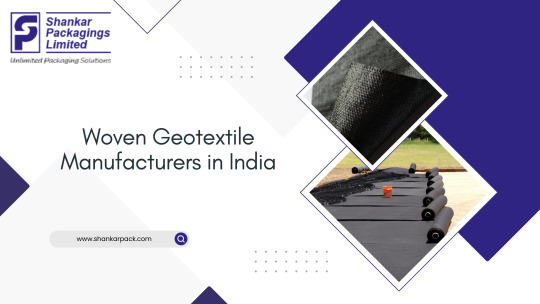
#pp woven geotextiles#pp non woven geotextile#plastic polyethylene sheeting#geotextile manufacturers#non woven geotextile suppliers#non woven geotextile fabric manufacturers#geotextile fabric suppliers#woven geotextile manufacturers in india#geotextile fabric manufacturers in india#geotextile fabric manufacturers in gujarat
0 notes
Text
Exploring Innovative Applications of PP Spunbond Nonwoven Fabric
PP spunbond nonwoven fabric, a versatile material, has witnessed a surge in demand due to its exceptional properties and wide range of applications. In Gujarat, India, where the textile industry thrives, spunbond nonwoven manufacturers have been at the forefront of innovation, catering to diverse sectors with their high-quality products. This article delves into the innovative applications of PP spunbond nonwoven fabric, highlighting the contributions of Spunbond non woven fabric exporters in Gujarat and the significance of PP nonwoven fabric suppliers in India.
Understanding PP Spunbond Nonwoven Fabric:
PP spunbond nonwoven fabric, also known as polypropylene spunbond fabric, is a type of nonwoven material manufactured using a continuous process. It is made from polypropylene fibers bonded together by heat and pressure, resulting in a fabric with excellent strength, durability, and dimensional stability. This fabric is inherently lightweight, breathable, and resistant to moisture, chemicals, and abrasion, making it suitable for various applications across different industries.
Innovative Applications:
Agriculture: PP spunbond nonwoven fabric is extensively used in agriculture for crop protection, weed control, and soil stabilization. It serves as an effective barrier against weeds, preventing their growth and conserving soil moisture. Additionally, it provides insulation to plants during extreme weather conditions and facilitates better root development. Medical and Hygiene: In the medical and hygiene sector, PP spunbond nonwoven fabric finds applications in surgical gowns, masks, diapers, and sanitary napkins. Its soft texture, breathability, and hypoallergenic properties make it ideal for use in disposable medical products, ensuring comfort and protection for patients and healthcare workers alike.
Packaging: The packaging industry utilizes PP spunbond nonwoven fabric for manufacturing tote bags, shopping bags, and packaging materials. Its high tensile strength, tear resistance, and ability to withstand varying temperatures make it a preferred choice for eco-friendly and reusable packaging solutions.
Automotive: In the automotive sector, PP spunbond nonwoven fabric is employed in interior components such as headliners, door panels, and trunk liners. Its lightweight nature, sound absorption properties, and resistance to abrasion enhance the comfort and durability of automotive interiors, contributing to a superior driving experience.
Construction: PP spunbond nonwoven fabric is increasingly being used in the construction industry for applications such as geotextiles, roofing membranes, and insulation materials. Its excellent filtration, drainage, and reinforcement properties make it indispensable for soil stabilization, erosion control, and building insulation.
Spunbond Nonwoven Manufacturers in Gujarat:
Gujarat, renowned for its textile industry, houses several spunbond nonwoven manufacturers who specialize in producing high-quality PP spunbond nonwoven fabric. The Spunbond nonwoven manufacturers in Gujarat leverages advanced technology and expertise to cater to the diverse needs of their customers across various sectors, including agriculture, healthcare, packaging, automotive, and construction.
PP Nonwoven Fabric Suppliers in India:
PP nonwoven fabric suppliers play a pivotal role in the distribution and supply chain of PP spunbond nonwoven fabric across India. With their extensive networks and efficient logistics, they ensure timely delivery of raw materials to manufacturers, thereby supporting the seamless production of finished goods. These suppliers adhere to stringent quality standards to meet the requirements of diverse industries and maintain the reputation of Indian textiles in the global market.
Conclusion:
The innovative applications of PP spunbond nonwoven fabric underscore its versatility and indispensability across diverse industries. Spunbond nonwoven manufacturers in Gujarat and PP nonwoven fabric suppliers in India play crucial roles in meeting the growing demand for this exceptional material, driving innovation and sustainability in the textile industry. As the market continues to evolve, PP spunbond nonwoven fabric is poised to revolutionize existing processes and pave the way for new advancements in various sectors.
Frequently Asked Questions (FAQs):
Q1: What are the advantages of using PP spunbond nonwoven fabric? A1: PP spunbond nonwoven fabric offers numerous advantages, including high strength, durability, breathability, moisture resistance, chemical resistance, and recyclability.
Q2: How is PP spunbond nonwoven fabric manufactured? A2: PP spunbond nonwoven fabric is produced using a continuous process called spunbonding, wherein polypropylene fibers are extruded, stretched, and bonded together using heat and pressure to form a cohesive fabric.
Q3: What are the environmental benefits of using PP spunbond nonwoven fabric? A3: PP spunbond nonwoven fabric is eco-friendly and recyclable, making it a sustainable choice for various applications. It reduces the consumption of natural resources and minimizes waste generation compared to conventional materials.
#spunbond non woven fabric exporters in Gujarat#spunbond nonwoven manufacturers in Gujarat#pp nonwoven fabric suppliers in India
0 notes
Text
The Benefits of Using Geotextile Fabric for Waterproofing!
Shankar Techx is a leading geotextile manufacturers in India. We offer 5 Common Types of Geotextile Fabric for Waterproofing. Like; Non woven geotextile, woven geotextile, Composite geotextiles, etc. To know about Advantages of Using Geotextile Fabric for Waterproofing, visit our blog!

#geotextile manufacturers in India#Non woven geotextile#woven geotextile#geotextile fabric for waterproofing#fabric for waterproofing#benefits of using geotextile#geo fabric manufacturers#geotextile fabric#woven filter fabric manufacturer#ground cover suppliers
0 notes
Text
What Are the Benefits of Using Non-Woven Fabric?
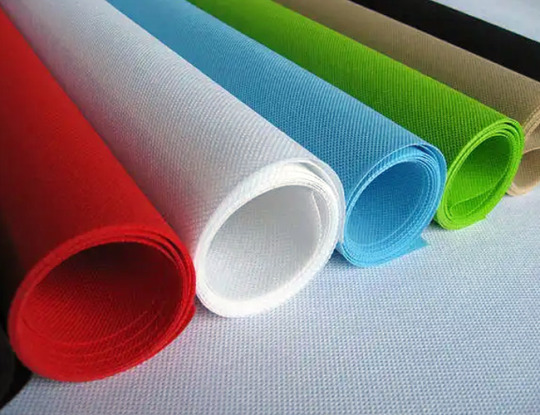
The non-woven fabrics are materials that are produced by thermal, mechanical and chemical processes. These are engineered fabrics that are used in various industrial and consumer products, by itself or with other materials. It is hygroscopic, UV resistant and flame retardant.
The non-woven fabrics have various benefits, including minimising solid wastes, and landfills and releasing no pollutants in the air and soil. In this blog, we will look into the various benefits of using non-woven fabrics that make them more practical and versatile than other traditional fabrics.
What is Non Woven Fabrics?
The non woven fabric is an engineered material manufactured from different fibers. These materials need not be converted to fibres into yarn, as the fibre yarns are bonded together due to inherent friction from one fibre to another.
Benefits of Using Non Woven Fabrics
Light Weight: The pp non-woven fabrics are the primary raw material for production. Its specific gravity is only 0.09, which is ⅗ of cotton. It is super-soft and pleasant to touch.
Softness: Its softness makes it ideal for non woven fabric bags. The bags are soft and comfy.
Eco-friendly: The reason why geotextile fabric manufacturers in Gujarat are in demand for its non-woven fabrics is its eco-friendly nature. This makes it applicable in different industries. With the rising concerns over environmental consciousness and sustainability, woven materials have gained immense popularity.
Air-Permeable: The non woven bags are made of fiber that exhibits excellent air permeability. This makes it easy to clean and maintain.
Non-Toxic and Non-irritant: The non woven bag material is non-toxic, non-irritant, odourless and stable. The manufacturers use food-grade materials, which makes it ideal for industries like pharmaceutical, personal care, cosmetics and other products.
Water Resistant: The non woven fabric manufacturer in India caters to different industries that need water-repellent materials. The non woven materials are made of polypropylene chips and are non-absorbent and water resistant properties. This makes the end-product exhibit excellent breathabilty and porous.
Excellent Physical Properties: As the material is made of PP spinning directly into the mesh and thermally bonded, it gives the products exceptional strength than other fibre materials.
Uses of Non Woven Fabric
The Non Woven Fabric is Used in a Variety of Applications, Such as:
Medical: The non-woven fabrics have gained a lot of popularity, especially during the pandemic. It is widely used in the manufacturing of various medical products like gloves, masks, surgical drapes, plastic, medical packaging, cleanroom wipes, disposal face masks and more.
Health & Hygiene: The spunboud non woven material has brought an evolution in the hygiene industry. It is used in producing various hygiene products like sanitary pads, diapers, make-up wipes, nail wipes, facial pads, and other products.
Geotextile and Construction: The PP cover manufacturers provide non-woven geotextiles that are used in various applications in the construction and engineering industry. It is primarily used for drainage systems, separation, canal construction, filtration, landfill lining and others.
Household: We are surrounded by non woven geotextiles. It is a part of everyday lives, ranging from water and air filters, household wipes, floor wipes, coffee filter material and much more. Shankar Packaging Ltd. is a prominent filtration fabric manufacturer. We offer a range of filtration materials in 100% multifilament, monofilament spun and other combinations.
Conclusion
Woven fabrics are used in different industrial sectors and play a pivotal role in the technical industry globally. Its soil stability, tear and puncture resistance, UV resistance, breathability, excellent weather ability and tensile strength make it a versatile material. Shankar Packaging Ltd. is a leading geotextile manufacturer and supplier in India.
We offer a comprehensive range of technical textiles, indu-tech, geo-tech, agro-tech and pack-tech products to clients across the globe. Our geotextile is also ideal for geo tubes and geo bags. At SPL, we provide technical textiles in 3 different yarns viz PES multifilament, PP tape yarns and PPMF. To know more about geotextiles and other products, contact us.
#non woven fabric#non woven fabric bags#geotextile fabric manufacturers in Gujarat#non woven bags#non woven bag material#non woven fabric manufacturer in India#spunboud non woven material#PP cover manufacturers#filter material
0 notes
Text
Best Manufacturer & Supplier of Roller Winder in India

Manufacturer & supplier of Roller Winder in India. Aawadkrupa Plastomech Pvt. Ltd. with 25+ years of industry experience & 50+ countries worldwide exporter. ISO 9001: 2015 & 45001: 2018, CE & One Star Export House Certified

For More Information:
https://www.akiropes.com/fishing-winder.php
"Aawadkrupa" survey no-131-A,Navagam Bhavnagar-Rajkot highway Bhavnagar, Gujarat 364060
+91-951-018-6014,+91-987-961-5963
#high speed rope making machines exporter in india#high speed rope making machines manufacturer#high speed rope making machines supplier#high speed rope making machines exporter#monofilament extrusion plant manufacturer in india#high speed rope making machines supplier in india#monofilament plant#monofilament extrusion#high speed rope making machines#pp non-woven fabric machine manufacturer in india#Roller Winder manufacturer#Roller Winder supplier#Roller Winder exporter#Roller Winder#Roller Winder manufacturer in india#Roller Winder exporter in India#Roller Winder supplier in India#Roller Winder manufacturer in India
0 notes
Text
youtube
1 note
·
View note
Text
The Modern Elegance of Foil Print and Digital Print Velvet Fabrics at Sanchi Velvets
Velvet, with its timeless beauty and luxurious texture, has always been a fabric that exudes sophistication. But in recent years, advancements in printing techniques have brought new life to this classic fabric. Foil print velvet fabric and digital print velvet fabric are two exciting innovations that are revolutionizing the world of velvet design. At Sanchi Velvets, we offer an exquisite selection of these prints, combining the plush luxury of velvet with cutting-edge design aesthetics. Let's take a closer look at these two stunning velvet fabrics and how they can elevate your creations.
Foil Print Velvet Fabric: A Touch of Glamour and Shine
Foil print velvet fabric is a unique fusion of classic velvet's plush texture with a metallic foil print that adds an element of shimmer and shine. This fabric is perfect for adding drama and sophistication to any design. The foil print is often applied in intricate patterns or bold designs, creating a stunning contrast against the deep, rich hues of velvet.
Key Features of Foil Print Velvet Fabric
Eye-catching Shine: The metallic foil print reflects light beautifully, giving the fabric an added dimension and making it stand out in any setting.
Sophisticated Designs: Foil print velvet often features geometric patterns, floral motifs, or abstract designs, which can add an extra layer of elegance and modernity to the fabric.
Versatile Applications: From evening gowns to home decor accessories, foil print velvet is perfect for creating pieces that require a touch of glamour. It’s ideal for fashion-forward pieces like statement jackets, skirts, and accessories or for luxury upholstery, cushions, and curtains.
Textural Contrast: The soft, velvety feel of the fabric combined with the shiny foil print creates an interesting contrast, making it a luxurious and tactile fabric choice.
At Sanchi Velvets, you can explore a variety of foil print velvet fabrics in an array of colors, patterns, and finishes. Whether you're designing for the runway or for a sophisticated living room makeover, foil print velvet offers an exquisite combination of style and texture.
Digital Print Velvet Fabric: Bold Designs with Precision
Digital print velvet fabric is a modern take on traditional velvet, using digital printing technology to create intricate, detailed patterns directly onto the velvet. This technique allows for highly precise designs, including photorealistic images, vivid color gradients, and complex illustrations. Digital printing has made it easier to produce vibrant, customized velvet fabric with fine details that would be difficult to achieve with other printing methods.
Key Features of Digital Print Velvet Fabric
Intricate Designs: Digital printing allows for incredibly detailed and precise patterns, from floral and abstract designs to intricate landscapes and geometric shapes. This gives designers endless possibilities for creating unique, personalized fabric.
Vibrant Color: The digital printing process ensures that colors appear crisp and vibrant, giving the fabric a fresh, modern appeal.
Perfect for Statement Pieces: Digital print velvet is perfect for fashion designs that need bold, standout patterns. From high-fashion dresses to statement blazers and accessories, digital print velvet allows designers to push the boundaries of creativity.
High-Quality Finish: Despite the bold prints, digital print velvet maintains the luxurious texture and softness of traditional velvet, making it an ideal choice for both apparel and interior decor.
Sanchi Velvets’ digital print velvet fabrics are available in a stunning range of designs, from floral and paisley patterns to more contemporary, artistic graphics. The result is a beautiful combination of plush texture and bold design, perfect for those looking to make a statement.
Choosing Between Foil Print and Digital Print Velvet Fabrics
When deciding between foil print velvet fabric and digital print velvet fabric, the choice largely depends on the aesthetic you're aiming for and the purpose of your design.
Foil Print Velvet is ideal if you're seeking a fabric that combines the opulent texture of velvet with a shimmering, metallic effect. It’s perfect for high-fashion pieces, evening wear, or any design where you want to introduce a bit of glamour and shine. Additionally, the reflective nature of foil prints makes it great for home decor pieces where you want to add an element of light and sparkle.
Digital Print Velvet is best suited for those who want to incorporate intricate patterns, vivid colors, and detailed designs into their fabric. This option is perfect for designers who want to create standout, custom pieces or those looking to print complex, one-of-a-kind illustrations on velvet.
Conclusion: Discover the Future of Velvet at Sanchi Velvets
At Sanchi Velvets, we are proud to offer a wide range of premium velvet fabrics, including foil print velvet fabric and digital print velvet fabric. Each fabric brings its own unique set of benefits to the table—foil print velvet offers an alluring shine and sophistication, while digital print velvet pushes the boundaries of design with bold, intricate prints. No matter what your project requires, our velvet fabrics are sure to provide the luxurious texture and stunning visuals you need.
Explore the future of velvet at Sanchi Velvets today and bring your creative vision to life with our exclusive selection of foil print and digital print velvet fabrics. Whether you're designing for fashion or home decor, these fabrics will add a touch of modern elegance and innovation to your work.
To know more about Sanchi Velvets visit us on:
#Sunshine Velvets#Gold Line Velvet#Dispro Print Velvet Fabric#Disperse Print Velvet Fabric#Non Velvet Burnout Fabric#Cotton Slub Velvet#Velvet Manufacturers India#Cotton Viscose Velvet#Ice Velvet fabric#Viscose Rayon Velvet#Woven Velvet Fabric#Light Weight Velvet Fabric#Heavy Weight Velvet Fabric#Polyester Viscose Fabric#Foil Print Velvet Fabric#Digital Print Velvet Fabric#Polyester Velvet Fabric#Printed Velvet Fabric#Cotton Velvet Fabric#Polyester Satin Fabric#Floral Printed Velvet Fabric
0 notes
Text
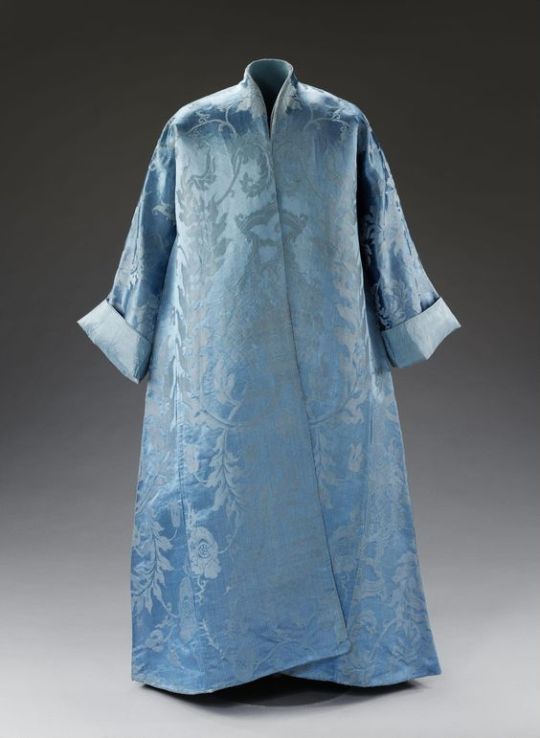
Night Gown
early 18th century
The Victoria & Albert Museum
"The loosely cut style of this man's informal robe is based on that of the Japanese kimono. Robes like this became popular in Europe from the mid-17th century, brought back by members of the East India Company, and by the 1670s European tailors were making them. The exact geographic and cultural source of the style was not generally well known in England, where they were called 'Indian gowns' when made of any non-European fabric, for example, Indian cottons, Chinese or Indian silks.
This nightgown is a striking and rare example, in very good condition for its age, made from blue silk damask woven in China for import into Europe. Such silks were primarily intended for furnishing, and appear in merchants' records as 'bed damasks'; the length of their pattern repeat was displayed to best advantage in the long drop of bed curtains. A silk damask of closely similar design to this was used to furnish a room in the summer palace of Prince Eugene of Savoy, Schlosshof, in 1725 (now in MAK in Vienna)."
145 notes
·
View notes
Text
What Are the Benefits of Using Non-woven Fabric?
You didn't know What Are the Benefits of Using Non-woven Fabric? Here, Shankar Packaging gave all info on Uses & Applications of Non Woven Fabric, and Benefits of Using Non Woven Fabrics, like Light Weight, Softness, Eco-friendly, etc. For more details on Non Woven Fabric Manufacturer in India, visit us!
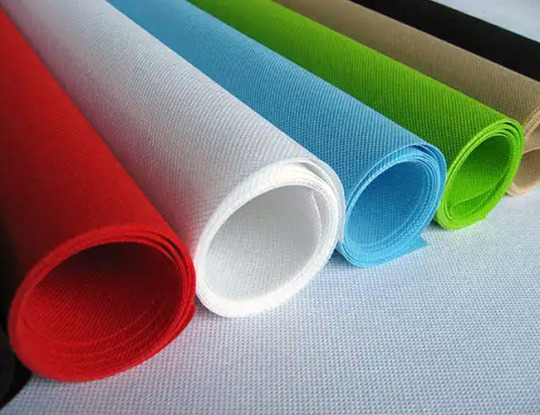
#non woven fabric#non woven fabric bags#geotextile fabric manufacturers in Gujarat#non woven bags#non woven bag material#non woven fabric manufacturer in India#spunboud non woven material#PP cover manufacturers#filter material
0 notes
Photo
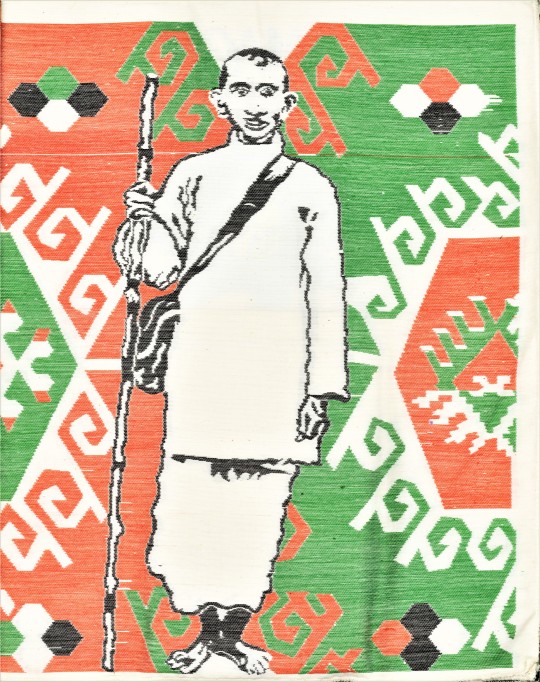
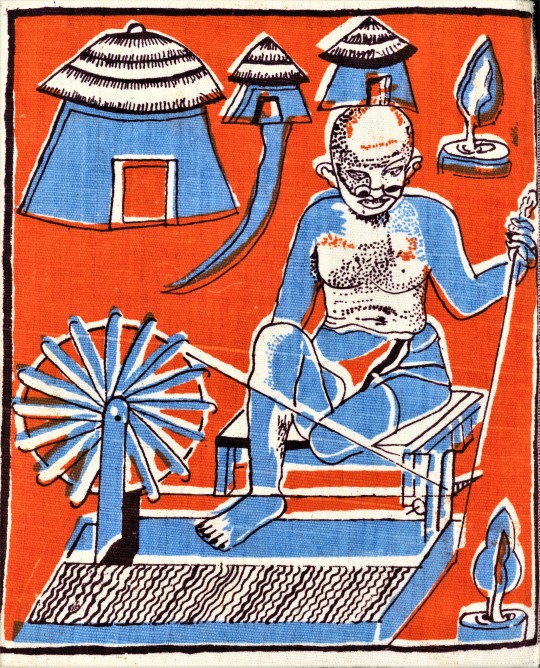





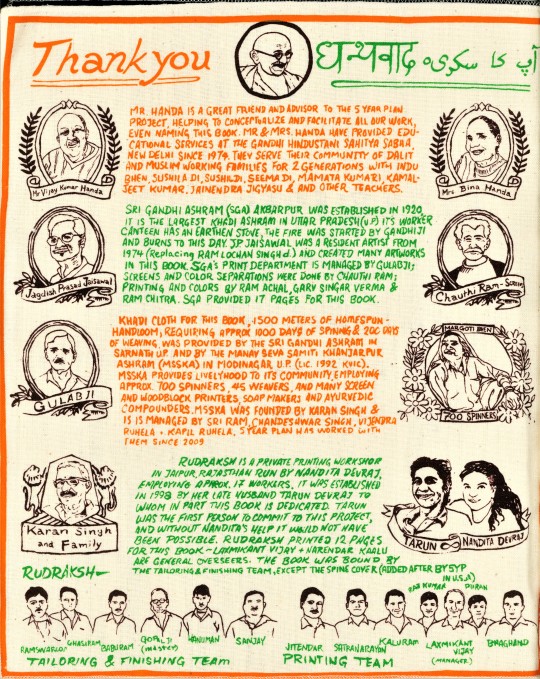
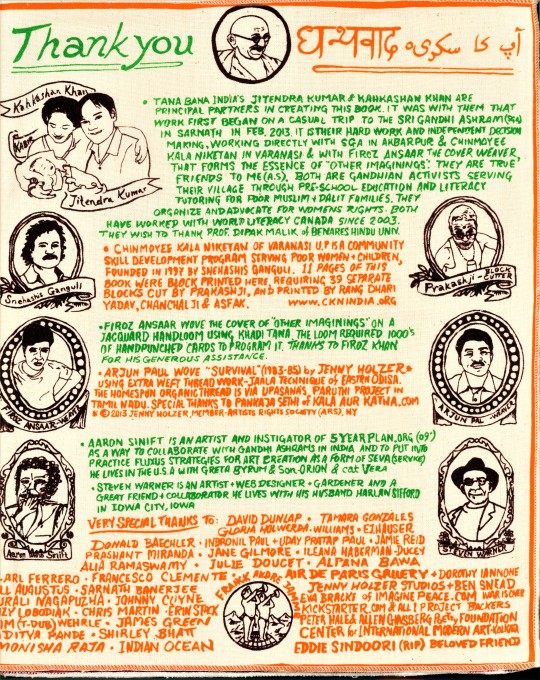

Asian American and Pacific Islander Heritage Month
During this AAPI Heritage Month we present Other Imaginings, an artists book made of hand-spun and woven Khadi cloth, with images woven, silkscreened, and relief printed by Indian artisans at Sri Gandhi Ashram in Akbarpur, the Chinmoyee Kala Niketan in Varanasi and Rudraksh in Jaipur. The images were curated and the project coordinated by American visual artist Aaron Sinift in collaboration with his Indian colleagues Kahkashan Khan and Jitendra Kumar. The book was produced in the state of Uttar Pradesh by 5YearPlan.org in 2016 in a limited edition of 100 copies.
The project explores universal aspects of Gandhian visual culture in discourse with contemporary international artists and new ashram artist commissions. Sinift writes:
This book is a seva (service) in honor of Mohandas Gandhi (1892-1948) and inspired by the khadi cloth he wore and propagated throughout India. Gandhij sae khadi as a swadeshi (locally produced & used)fabric to clothe a free and independent India. . . . OTHER IMAGININGS is an attempt to introduce Gandhiji’s counter-industrial vision of village self-sufficiency. . . . This book in an artifact (art & fact) of a living tradition of service that continues into the present day, and is curated as a mix of deshi & videshi (local + foreign), Gandhi ashram & contemporary art. We hope you will take the time to consider the qualities of this home-spun khadi . . . and linger on its fragrance and tactile qualities as evidence of the hundreds of hands contributing to its creation. . . .
The book includes images designed by several non-Indian artists, such as Judith Linhares, Dorothy Iannone, Jenny Holzer, Philip Taaffe, Duncan Tonatiuh Smith, and Yoko Ono. Except for the cover, we are only showing the pages designed by Indian artists here. Click on the images for attributions.
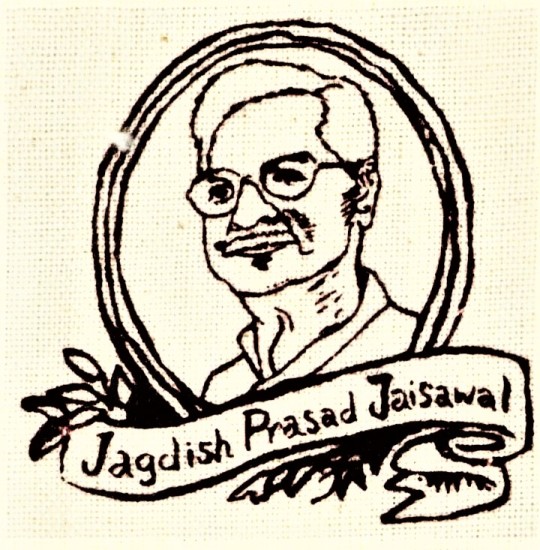
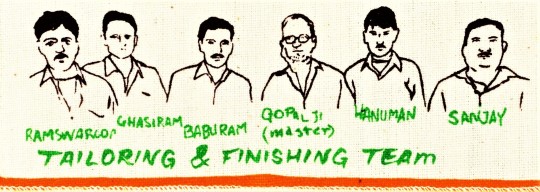
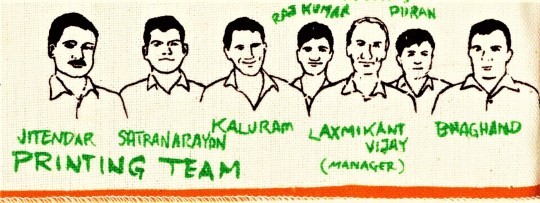
#Asian American and Pacific Islander Heritage Month#AAPI Heritage Month#holidays#India#Indian art#khadi#Other Imaginings#Aaron Sinift#Kahkashan Khan#Jitendra Kumar#5YearPlan.org#Sri Gandhi Ashram Akbarpur#Chinmoyee Kala Niketan#Rudraksh#J. P. Jaisawal#silkscreen printing#woodblock prints#hand-woven fabric
32 notes
·
View notes
Text
Everything You Need To Know About Geotextiles

Shankar Techx is one of the prominent Geotextile fabric manufacturers and suppliers in India and we provide all over the world with our superior quality filtration fabrics, coating substracts, ground covers, and technical textiles, we are well-known as leading FIBC bag exporters, for more information visit our blog.
#geotextile fabric for soil stabilization#woven geotextile fabric#geotextile suppliers in India#non-woven geotextile fabric#geotextile fabric manufacturers#geotextile fabric India
0 notes
Text
Most Comfortable Bras, You'll Think They're Skin!

Introduction
What goes into making the most comfortable bras? There are quite a few points actually, and most lingerie brands get it so wrong! So what goes into making a comfortable bra? Well, it starts by first understanding what makes a bra uncomfortable. Buy sports bra online
The majority of women in India find bras uncomfortable due to one or many of the following reasons:
Incorrect materials used
Strap thickness
Outdated bra design and shaping
Non-inclusive sizing
So, in theory, overcoming all of these obstacles should lead to the ‘perfect bra,’ something that most women only believe to be a myth.
Let’s take a look at all of these points one by one and see how Candour London overcomes them to design a bra so comfortable you’ll feel in your own skin when wearing it.
Qualities of the Most Comfortable Bras for Everyday Wear
Seeing as you will be spending what feels like the whole day in your bra, it makes sense that comfort is your prime concern. Because who wants to feel imprisoned in their bra? Definitely not you!
Here’s what goes into making comfortable bras for everyday wear that suit the needs of modern women.
1) The Most Comfortable Bras for Everyday Wear Use these Materials
If you’re a woman, you can probably guess a fabric by looking at it and then confirm it by touching it. It’s our secret telepathic gift!
Considering bras are classified as undergarments, uttermost care should be taken to ensure fabrics are selected based on the properties required by that particular part of the bra. Comfortable bras for all-day comfort are a staple for every woman!
Certain fabrics come to mind when thinking about bras. These are the Spandex-based Lycra and Elastane fabrics. Other fabrics include Cotton, Nylon, Silk, Lace, and other Woven fabrics. These fabrics are more comfortable than the synthetic ones flooding the market these days.
Understanding the Parts of a Bra
A bra is the complete garment, but, there are several parts that go into making it. They are as follows:
Cup
Bridge
Band Fabric
Lining
2) Strap Thickness
We have gone over what band fabric should be used. Now it is time to go through what the strap thickness should be. The ideal strap thickness varies for different women as body types vary.
So, a bra strap thickness aimed at lighter-chested women may not be comfortable at all for heavier-chested women, and rightfully so. At Candour London, we don’t go by the motto of one-size-fits-all.
A variety of strap thickness options and designs are available to ensure that you find the right one. You can also find our bra designs that offer the ability to change bra straps for ones that suit your comfort or style requirements. This caters to instances when you need your bra straps to remain concealed.
3) Design That’s Made for Women
Most women are instilled with the “if it looks good, it won’t feel good” mentality, this is usually due to bra makers who think women shop with their eyes when it comes to bras. So the myth is that good-looking bras aren’t comfortable bras for all-day comfort.
What makes Candour London different is that we have women who design bras for women! Based on the body types of all women, our bras are carefully designed to ensure maximum comfort.
More often than not, we get it right and you’ll even forget that you are wearing it! If that happens, mission accomplished, right? Don’t worry it will look good too!
Where do bras differ in terms of design?
Well, some women don’t like higher or lower cups or may have a preference for the shape of the cup. Not to mention, depth also plays an important role.
The making of the most comfortable bras comes from design pioneers who are able to offer inclusivity by making designs based on ‘ALL’ body types and anticipating possible drawbacks and comfort concerns- before they happen.
4) Sizing Should be Flexible Because Bodies Are!
When looking to buy comfortable bras for all-day comfort, the sizing chart looks pretty straightforward. It is anything but that! That’s because there are several women who fall outside of these hardened sizing schemes.
The conventional bra sizing chart is made for the majority of women who fit in them. However, there is an immense number of women who fall between the cracks!
Perhaps one woman is bustier but has a rather firm back, meaning the cups would have to be larger while the strap should be slim enough to not be too loose. The opposite applies to women who have a broader back.
Besides all women have that special bra size or fit that leads to that eureka moment where they have found comfortable bras for everyday wear.
This is great because as a woman, we have all been there (and it is tiring)!
Comfortable Bras for All-Day Comfort Shouldn’t be Expensive!
We have established that identifying a comfortable bra on sight is an almost impossible task! So this rare commodity of comfort shouldn’t come at a price! Also, they shouldn’t be as hard to find as diamonds.
That’s where we, Candour London come in.
Candour London is a Gen Z-centric undergarment brand looking to bridge the divides between style, comfort, and affordability. A bare minimum such as a classy bra shouldn’t have to be something that makes a dent in your purse.
We have done away with the outdated concept of bras and have found a way to combine the needs and wants of women. Girls of today use bras as a fashion statement as well, not some undergarment that they should be ashamed of!
Conclusion
Candour London is a progressive brand that aims to provide young women with options for the most comfortable bras, in a market where the options for comfort and inclusivity seem bleak, to say the least.
Furthermore, fashionable women shouldn’t have to be forced into buying anything their heart isn’t inclined to. Gone are the days when women have just three or four options to choose from.
For More Info: -
women's loungewear sets india
Buy Nightwear Sets For Women
#Stylish loungewear sets for women#Best bra for women online#Sports undergarments for sale#Sexy lingerie for women
2 notes
·
View notes